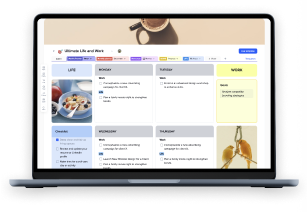If you are looking for competitive advantages to take your project management to the next level, a SWOT analysis is a great way to hone in on your strengths, identify weaknesses, spot opportunities, and understand threats. It allows you to maximize resources, analyze data more effectively, and create an actionable strategy for success.
With the perfect SWOT analysis template from xTiles, a SWOT analysis example, and the right techniques in mind, it can be a very powerful tool!
Understand The Purpose Of A SWOT Analysis

SWOT analysis is a strategic planning technique project managers employ to assess the present condition of their projects across four categories: Strengths, Weaknesses, Opportunities, and Threats.
This method is instrumental in pinpointing potential challenges and creating a business plan to navigate them effectively. Additionally, it highlights the project’s robust elements, providing a chance to leverage these for further success. Understanding the comprehensive landscape of external and internal factors influencing a project, equips project managers to drive significant enhancements.
Recognizing strengths and weaknesses involves an introspective look at the project’s resources, processes, and capabilities, while identifying opportunities and threats requires an awareness of the broader market, industry trends, and external variables. This balanced approach ensures a well-rounded and proactive strategy for project management and development and intelligent business decisions.
How To Execute A Swot Analysis Successfully
A SWOT analysis in project management an important component of strategic planning and helps businesses identify potential risks and opportunities that may affect their success. Knowing what a SWOT analysis entails can help businesses make decisions that are more informed and data-driven.
Let’s take a look at each component of a SWOT analysis process in detail.
Strengths
The strengths portion of the SWOT analysis in project looks at what your business is currently doing well. These can be things like products or services, pricing, customer service, marketing strategies, etc. It is possible for the company company to have positive internal strengths if it has a good structure and a positive atmosphere.
To properly evaluate your company’s strengths it is also important to consider them from the customer’s perspective. What do they think about the product or service you offer? In what ways does it differ from its competitors?
For example, if you analyse a restaurant you might consider how their food offerings compare to other restaurants in the area. Do customers enjoy the quality of their food? Is it unique compared to other local restaurants? Are there any special promotions that you restaurant offers that make customers come back for more?
Answering these questions will help project managers determine what the project’s or product’s strengths are so that the whole team can focus on building upon them.
Weaknesses
The weaknesses portion of the SWOT analysis for a project looks at any areas where you may be falling short in comparison to competitors. This could include anything from outdated technology or a need for additional human resources in the project team.
For a project manager conducting a SWOT analysis, it is important, to be honest when evaluating weaknesses – so that they can be addressed proactively rather than reactively with solutions and strategies moving forward.

For example, if you analyze an online store, consider how easy it is for customers to find what they are looking for within this particular website design or checkout process. Are there any areas where customers become frustrated with the process due to its complexity or lack of clarity?
If so, this would be considered a weakness that needs attention as soon as possible so that customers can have an enjoyable experience shopping on your site.
Opportunities
The opportunities portion of the SWOT Matrix looks at potential new markets or changes in existing markets that could benefit the business. This could include anything from introducing new products or services into existing markets to expanding into new geographical locations.
Evaluating potential opportunities early on, allows businesses to take advantage of them before their competitors do, which can give them an edge over their rivals in those particular markets.
Threats
The threats portion of the SWOT analysis looks at external factors such as competition from other companies that offer similar products or services as well as economic downturns which could affect demand for certain types of goods or services offered by businesses within certain industries.
By understanding potential threats ahead of time you can plan accordingly. So you are not caught off guard when things go south about sales and profits.
Moreover, this helps minimize risk while still allowing you enough time to prepare contingency plans in case something happens.
Expert Tips for Conducting a SWOT Analysis Ensuring Project Success

Conducting a SWOT analysis is a critical part of project planning process. It can be an effective way to determine the strengths, weaknesses, opportunities, and threats.
So, take a look at 13 tips on how to conduct a SWOT analysis to ensure that your project is successful.
1. Identify Goals & Objectives
Before a SWOT Analysis in project management is conducted, it is important to identify the goals and objectives for project completion. This helps to provide focus and direction to the analysis and can ensure that decision-making is targeted, actionable, and meaningful.
When defining the goals and objectives of a project, they must be specific while providing enough scope such that they can be broken into measurable pieces.
Also, as business strategies can change over time due to external factors or market forces, it is essential to consider these surrounding variables to produce a comprehensive analysis. With concrete goals set up before initiating an analysis, organizations can better guarantee the successful completion of their projects.
2. Identify Your Project’s Strengths
When assessing your project SWOT analysis, ask questions such as “What are our current capabilities?” and “What resources do we have access to?” Consider relevant factors, like budget and manpower, as well as intangible qualities like team morale and creativity.
Some other relevant strengths might include managerial experience or robust processes in place to ensure the project’s progress.
Once you have identified your strengths, leverage them to guide initiatives that support your objectives. When used correctly, conducting a SWOT analysis can be a powerful strategic planning tool for boosting the success of your project.
3. Analyze The Weaknesses Of Your Project
To evaluate this, it’s important to determine which resources are not available and what results have been exhibited during this period.
External and internal weaknesses could vary. Examples could range from difficulties with implementing new technology due to insufficient IT support to a lack of stakeholder engagement or project funding due to inadequate communication channels.

Moreover, considering any related questions and critical factors can be beneficial such as: how can development issues be addressed? What gaps could exist between current resources and needed ones? How difficult would it be to make the necessary changes?
Answering these types of queries reveals the strengths and weaknesses of a project’s progress.
4. Examine Opportunities To Take Advantage Of To Improve Your Project
SWOT Analysis helps to ensure that your project is successful. By examining opportunities and threats associated with the project, you can take advantage of those opportunities and reduce or eliminate potential threats.
When considering opportunities, ask yourself questions such as: What resources are crucial for a project’s success? How could I use these resources most effectively? What outside factors or partnerships can help me pursue my goals more efficiently or powerfully?
Answering these questions will help you identify any potential competitive advantages and allow you to take action accordingly. Furthermore, investing time into monitoring opportunities and forming contingency plans will empower you to quickly act on them if needed, ensuring greater success for your project overall.
5. Recognize Potential Threats That Could Harm Your Project
It is important to identify threats early in the project life-cycle, otherwise, they can derail or even end your project. Examples of potential risks include inadequate budget, lack of resources, unrealistic deadlines or goals, and lack of technical capability.
To assess the threat level, ask some related questions such as: Is there enough budget to complete this project? Does your team have all the skills needed to finish this task? How realistic are your project objectives?
Answering such questions can help you pinpoint potential threats and address them upfront so that you can minimize any negative impacts on your project.
6. Collect Relevant Data
Accumulating relevant data from stakeholders, experts, and research resources is key to making your project succeed. This data should include information about the project objectives and goals, as well as any potential risks or areas for improvement.

It is also important to gather data from both internal sources, such as employees, and external sources, such as clients, to get a comprehensive view of the project.
7. Conduct Brainstorming Sessions
It can be beneficial to hold brainstorming sessions with various stakeholders to generate ideas for potential solutions and strategies relating to the project and better understanding your main objectives. These brainstorming process can help identify potential risks or areas for improvement that may not have been considered previously.
Also, brainstorming solutions can help ensure that all stakeholders and employees are on the same page about what needs to be done for the project to succeed.
For example, if you’re a project manager who runs a marketing campaign for a new product launch, brainstorming could reveal new insights into how best to position the product or service in comparison with competitors in the market.
8. Analyze Competitors
This includes gathering information about their products, services, and capabilities. This will help you identify strengths and weaknesses that you may not have considered before.

Besides, you can use this data to analyze trends in the market and determine where your project stands against competitors.
9. Gather Data From Internal Sources
Your team members are often able to provide valuable insight into their areas of expertise which can lead to important decisions regarding your project’s SWOT analysis.
Ask each team member questions related to their role within the project so they can provide their unique perspective that might be difficult to identify through other methods of research.
Further, consider asking employees outside of the immediate team who may know particular areas that could impact your project’s performance e.g., customer service reps.

10. Organize Your Findings Into A Comprehensive Table Or Diagram
After evaluating all of your gathered data, it is important to organize your findings into a comprehensive table, diagram using SWOT analysis templates- so that everyone involved in the project understands where things stand currently and what needs to be done moving forward.
This visual representation of all of your findings will help ensure that no one gets lost in details when discussing strategy moving forward.
11. Identify Potential Risk Areas For Improvement
You should consider both short-term risks (those that could affect the success of the immediate project) and long-term risks (those that could affect future projects).
Moreover, also consider any potential areas of improvement so that you can optimize your performance and achieve better results in the future.
12. Evaluation of the Budget and Timeframe
Evaluation of the budget will help you create an effective strategy for achieving the desired outcome of your project. Consider what resources are available to you, what skills are required for the successful completion of the project, and how you can leverage these resources or skills to maximize effectiveness in terms of timeframes and budgets.
The timeframe is also a critical factor to consider when conducting a SWOT analysis. Without a clear understanding of the timeframe, it is difficult to assess the internal and external factors that may impact the organization’s objectives.
A SWOT analysis should be conducted with a specific time frame in mind, whether it is short-term or long-term. This allows the organization to identify potential opportunities and threats that may arise in the near future, and develop strategies to address them accordingly.
13. Make A Plan
The final tip is to make a plan with the timeline maker based on the findings from your SWOT analysis. Once you have identified any areas for improvement or risk mitigation, it’s time to formulate a plan of action that outlines how these improvements will be implemented within the project timeline design.
This plan should include clear objectives, milestones, tasks, deliverables, cost estimates, timeline expectations, etc. so that everyone involved knows exactly what they need to do throughout each stage of the project management process.
Conclusion

SWOT analysis conducting can be an effective way to determine the strengths, weaknesses, opportunities, and threats of any project. It is an important part of the project management process that should not be overlooked if you want your projects to succeed. No matter what you’re doing, from knowing your competitors’ positioning to preventing potential risks from spiraling out of control, these tips will help you get the most out of your own SWOT analysis and make sure it’s driving value toward successful outcomes. Following these tips will help you create an effective SWOT analysis which will guide you throughout the entire process of setting up your next business.
We hope this guide and our template will be helpful so your next SWOT analysis will be a piece of cake!
FAQ
1. What is SWOT analysis in project management?
SWOT analysis is a strategic planning technique used in project management to evaluate the Strengths, Weaknesses, Opportunities, and Threats associated with a project or organization. It helps identify internal and external factors that may impact the project’s success.
2. How to conduct SWOT analysis?
To conduct a SWOT analysis, first, list the project’s strengths and weaknesses (internal factors), and then identify the opportunities and threats (external factors). Gather input from team members, stakeholders, and subject matter experts to ensure a comprehensive analysis.
3. Who conducts SWOT analysis?
SWOT analysis is typically conducted by the project manager, possibly in collaboration with the project team, stakeholders, and relevant subject matter experts. The project manager facilitates the analysis and consolidates the inputs from various sources.









